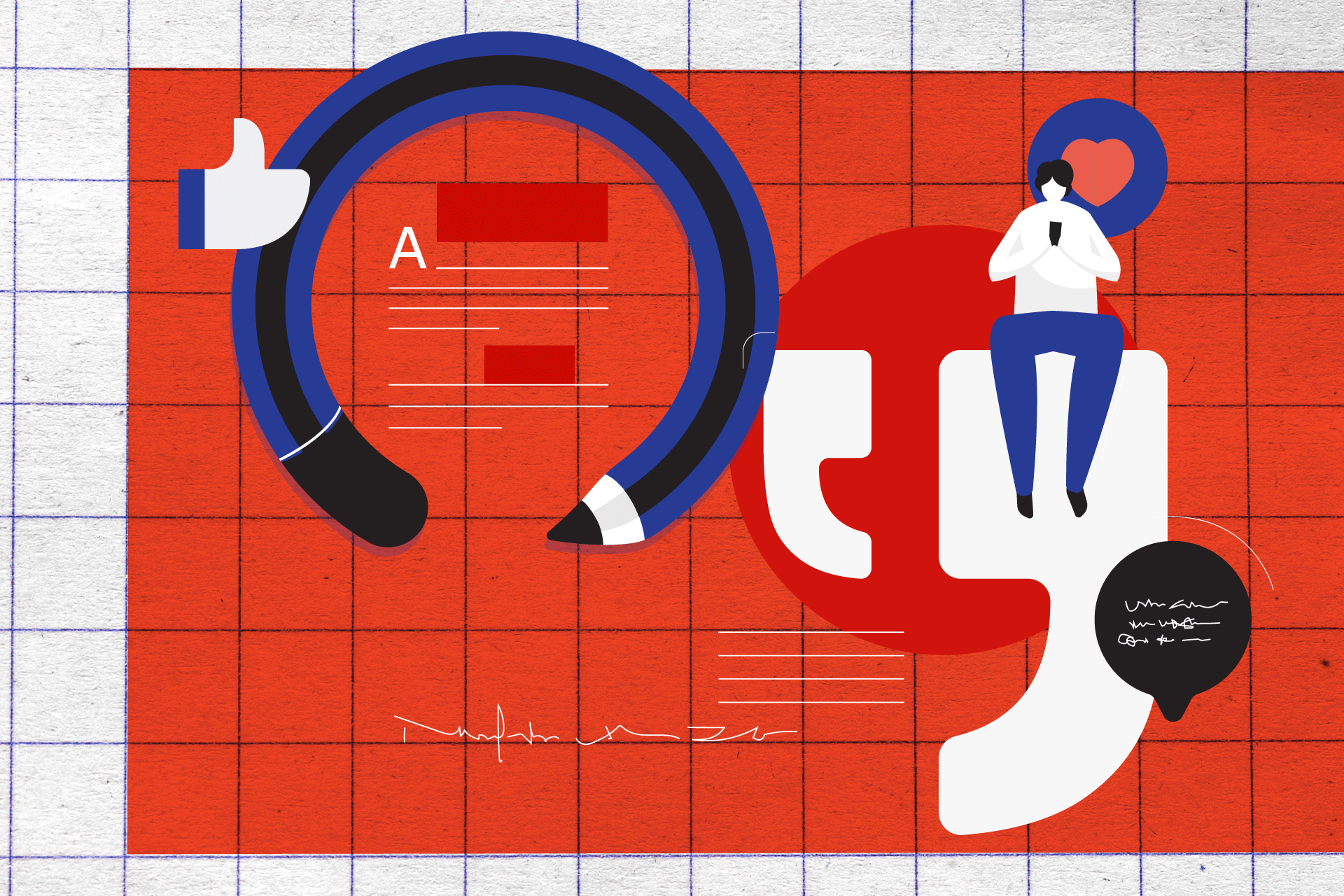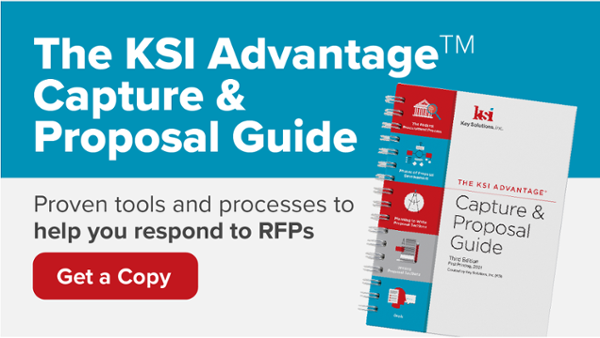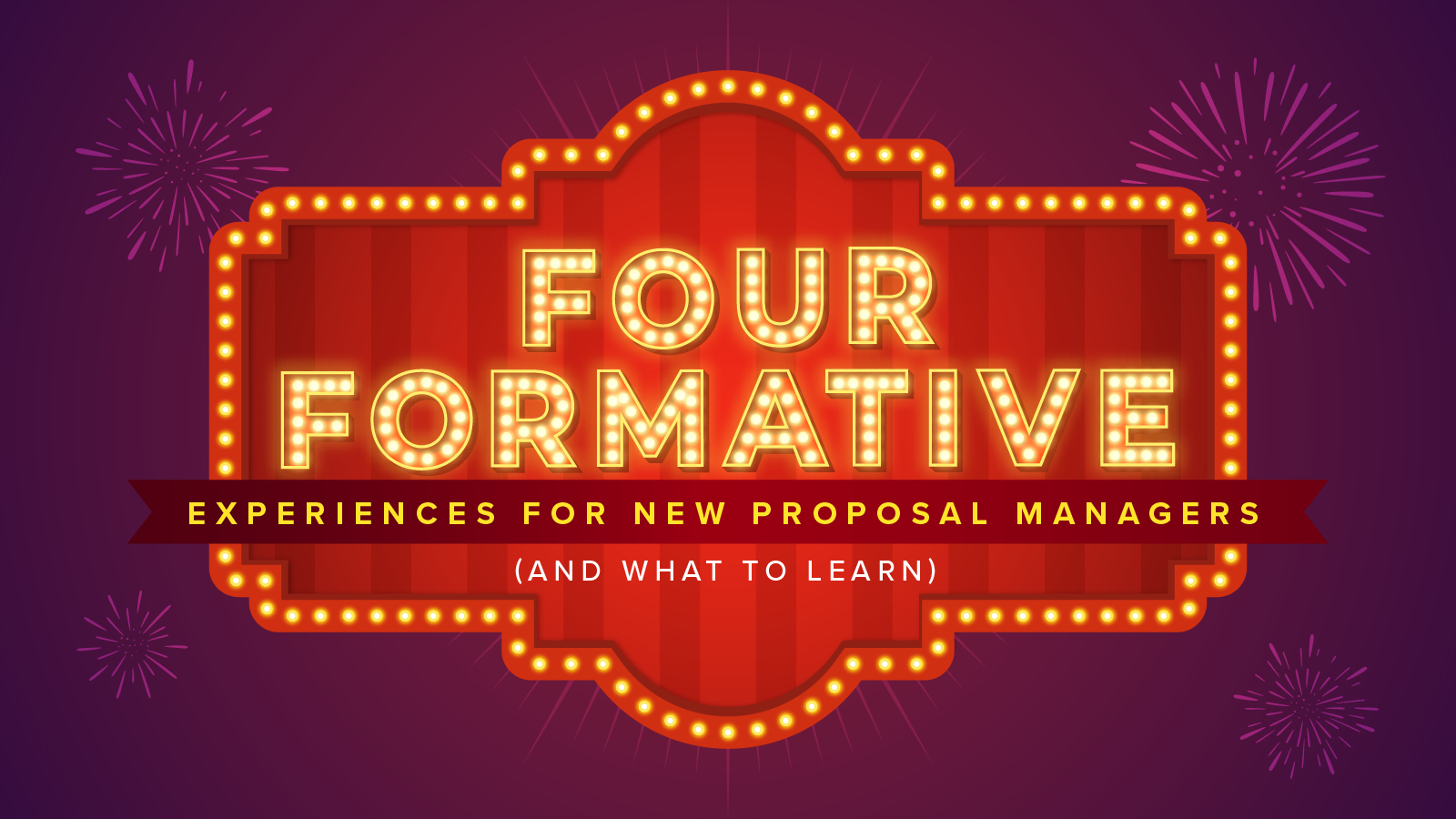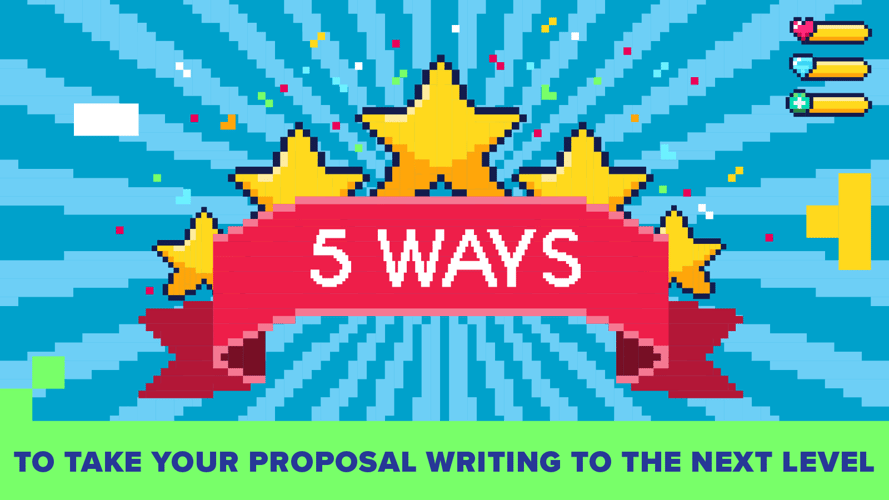
If you have participated in a proposal effort or two, odds are you know the basics of proposal writing.
Whether it’s active voice vs. passive voice, the necessity of mentioning the customer’s name more than yours, or the value of keeping your writing in the present tense, we all know the fundamentals for the most part. There are some niceties, though, that are usually only learned after months or years of proposal experience.
Below are five subtle lessons on proposal writing that will strengthen your content, make your proposal easier to evaluate, improve your score, and thus improve your win rate!
1. Your Benefits Should Be Related to Cost, Risk, Efficiency, or Ease of Use
The customer wants to know how your features help their organization.
It’s great that your solution has low latency or that you’re the incumbent and already familiar with their program, but what does your customer gain from this?
Does your feature cut costs, lower risk, or offer the customer greater efficiency or ease of use? Be overt when explaining the “so what” of your benefit so that there’s no room for misinterpretation. You want the evaluator to read about each feature and understand explicitly what they stand to gain.
Remember, a real benefit is something the customer has reason to care about. Typically, that “reason to care” relates to cost or risk.
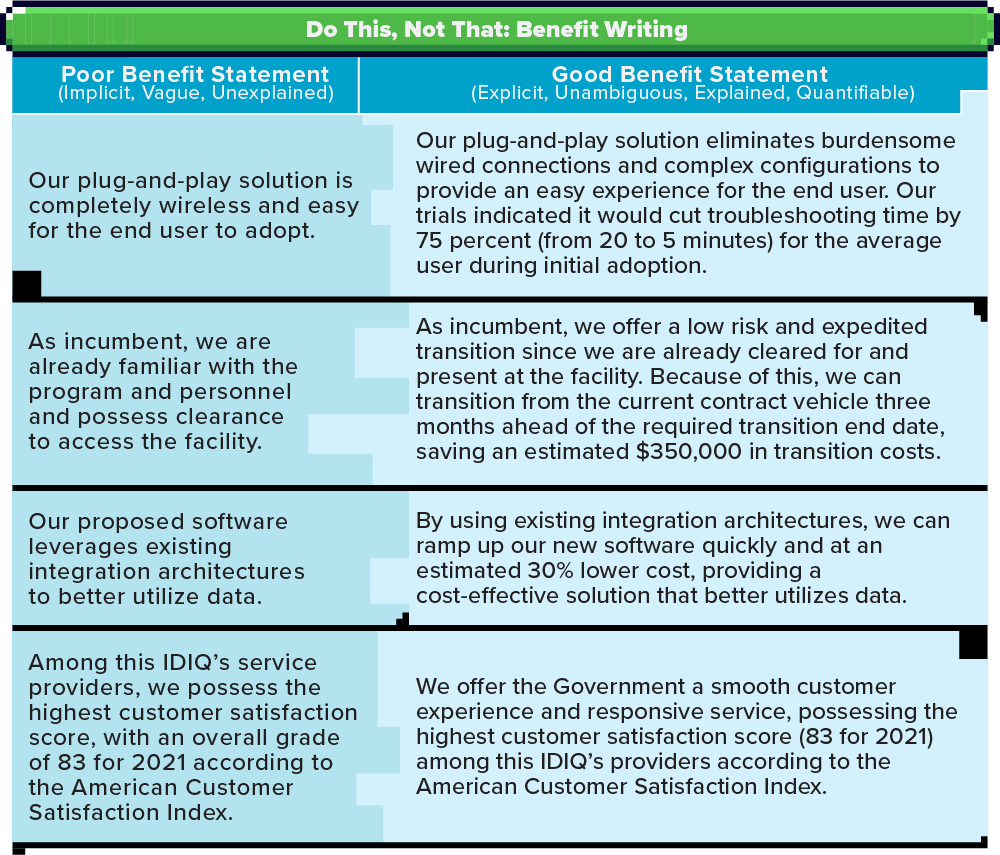
2. Your Past Substantiates, But It Isn’t Your Solution
Even though you’ve implemented similar solutions in the past, just saying this doesn’t make for a solution.
It’s common during the initial solution development for Subject Matter Experts (SMEs) to say, “Well, we’re just going to do the same thing we did for Contract X.” That may well be true, but the solution can’t end there.
Your proposal must answer the customer’s needs with a unique response and only then use past performance to prove you are capable of delivering. Doing this substantiates your approach while still answering your customer’s specific needs.
A proposal writer in this situation should interview their SMEs on what exactly was done for Contract X and ask them how that solution would be tailored to meet the needs and timeframe of your potential customer, and what benefits the proven solution offers.
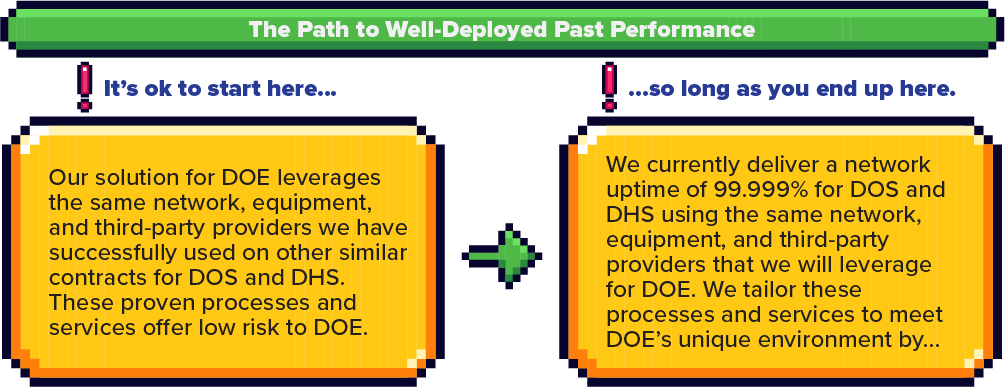
3. Link Back to What Matters
Every component of your proposal should tie back to some aspect of the customer’s solicitation.
Think of every solicitation as a math test, and every requirement as a math problem your proposal must solve. The evaluator wants to see your sums as well as the work you did to calculate them, but there’s no guarantee of extra credit should you start answering questions that weren’t on the test.
Your customer wrote the solicitation to address a specific need or problem. Each sentence of your proposal should be directly relevant to the requirements they thoughtfully wrote and compiled to answer that need or problem. The evaluator’s time is precious and limited, so all content should apply directly to something they asked for, to best maximize your score.
A tangent that provides extraneous information strays from the requirements, takes up page count and can impact evaluation. For example, let’s say your company is bidding on a contract to transition equipment from one Government medical facility to another and “activate” it by getting everything online and operational: a fairly straightforward effort with no other requirements outside the scope of transporting and installing the equipment, and with a very tight page limit for the proposal.
Here’s the tangent:
“MedicinePort has a history of performing medical facility activations for a combined total of 30 successful activations across Government and commercial markets. Our Project Management Professional (PMP) certified staff plan and execute activations, as well as develop and host training clinics for facility staff. Our expert trainers ensure facility personnel have full operational knowledge of the equipment post-activation. We also provide how-to-use documentation for users to study and reference.”
It’s great that MedicinePort has the capability to train users, and tangents like this may speak to your company’s capabilities, but if the customer didn’t request a service, it should be omitted from the proposal. This is especially true if the page count is tight and the space may be better used on answering and substantiating the actual requirements.
You don’t want to make it seem like your proposal is missing the point of the solicitation, or attempting to upsell the customer on a service or product they didn’t ask for.
Again, remember that the customer wrote the solicitation to solve a specific problem. Staying in scope makes life easier for the evaluator and makes your proposal easier to score.

4. Validate, Validate, Validate
Any claim or feature must be married to a (preferably quantifiable) proof point.
Big adjectives like “largest” or “best” or promises like “low-risk” or “cost-saving” offer the evaluator no basis for understanding or verification. You must substantiate your points with metrics to back up your statements and give evaluators confidence in your claims. Give them a reason to believe you!
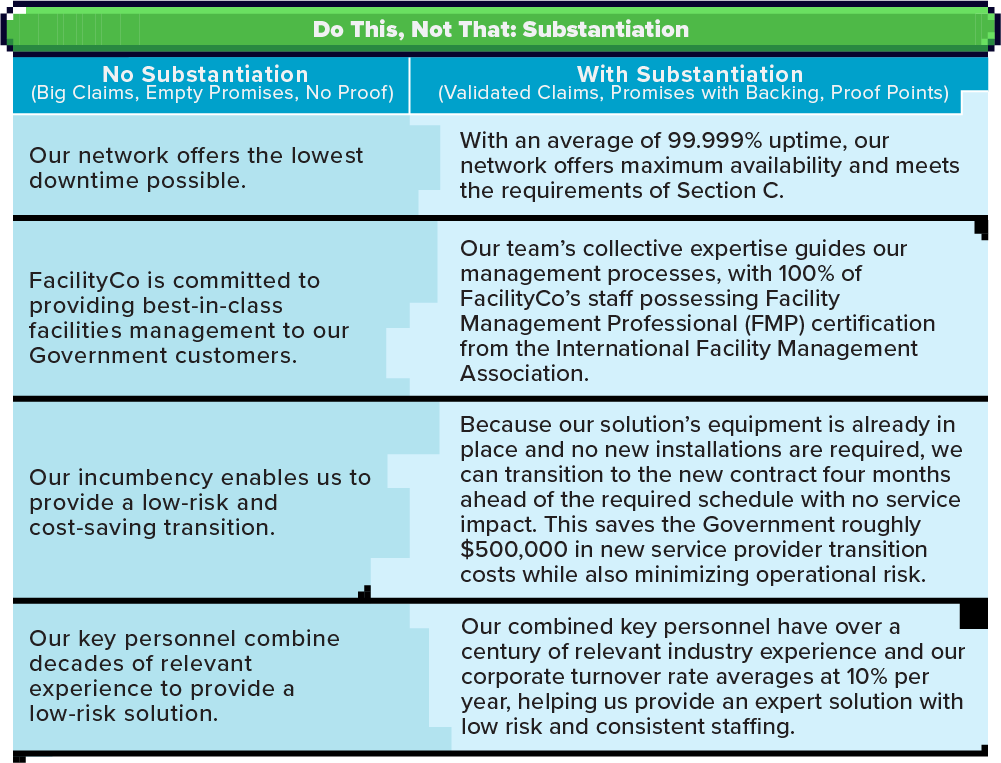
5. Remember, Only the Proposal is Evaluated—Nothing Else
Your evaluator is only going to grade your offer based on the strength of your proposal.
In the federal contracting space, they are legally required by Federal Acquisition Regulation (FAR) to be impartial when evaluating. Never presume they will take off-proposal or quid pro quo factors into account, and never assume the offeror will know, understand, or factor into their evaluation something that’s unwritten. If institutional or background knowledge is necessary to understand your solution, write to it, or your proposal could be DOA!
Likewise, don’t rest on your laurels. It is your proposal, not your industry reputation, that will be speaking for you during the evaluation.
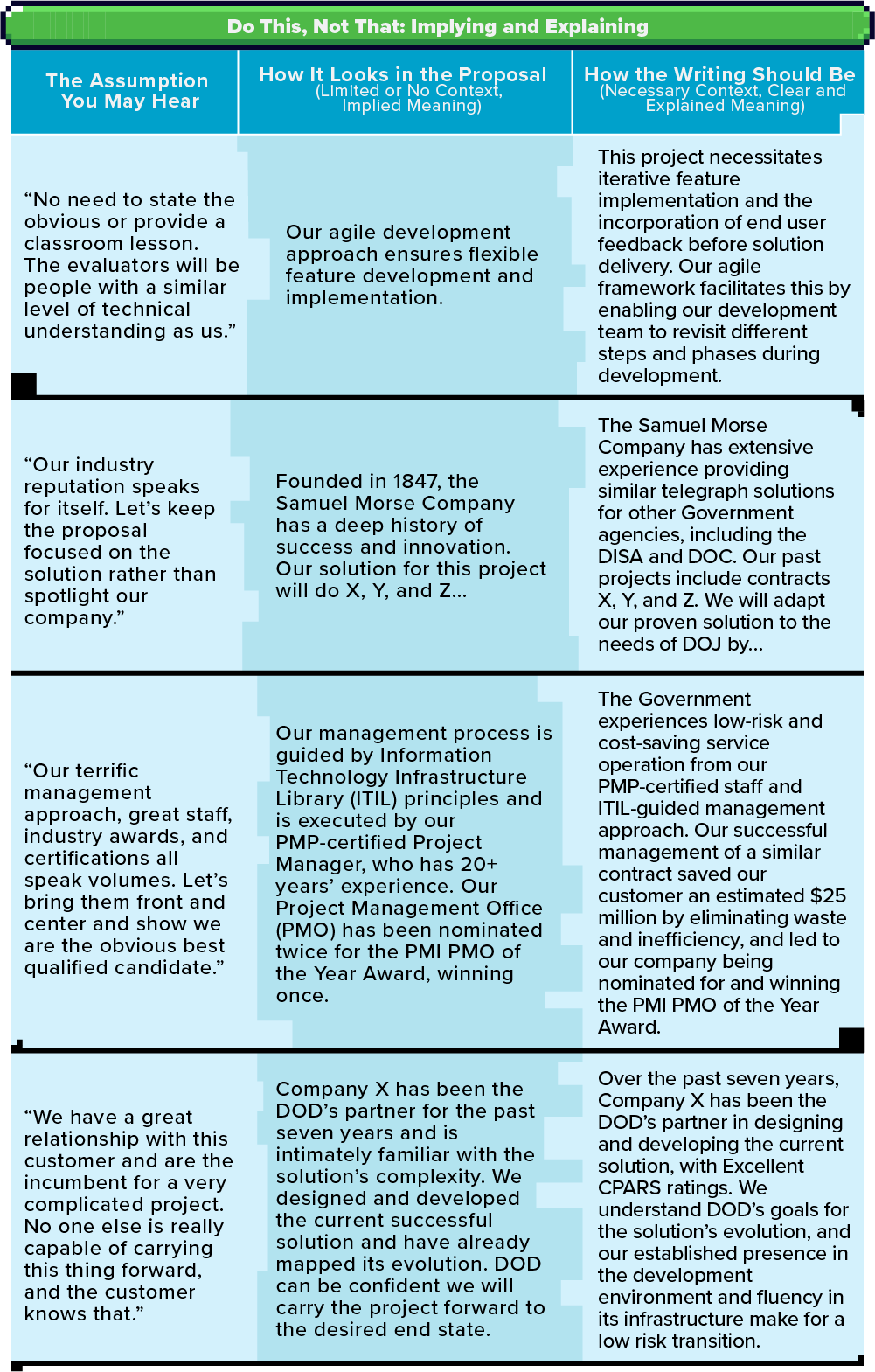
Conclusion
When put in practice, these tips result in no-waste proposals that are easy to evaluate and well populated with clear benefits that are substantiated with quantifiable proof points. Persuasive writing is an interesting art because it follows nuanced rules—like those we discussed—to create obvious and validated points that motivate the reader.
By using the writing approaches in this article, your solution’s benefits will be unambiguous, provable, and more apparent to evaluators. This makes evaluation easier, maximizes your score, and best positions your organization for a win! Also, on a personal level, you will find yourself steadily improving your craft as a writer and communicator by using these methods—something I personally find quite fulfilling!


